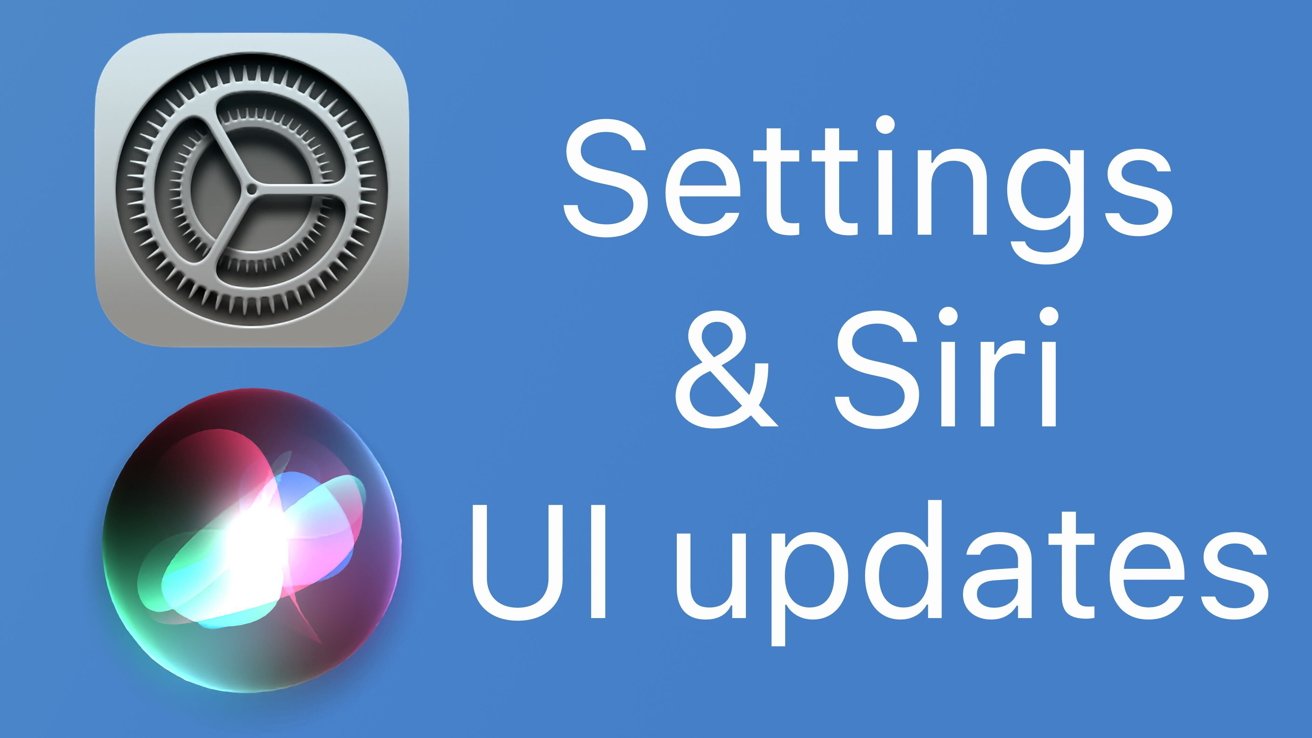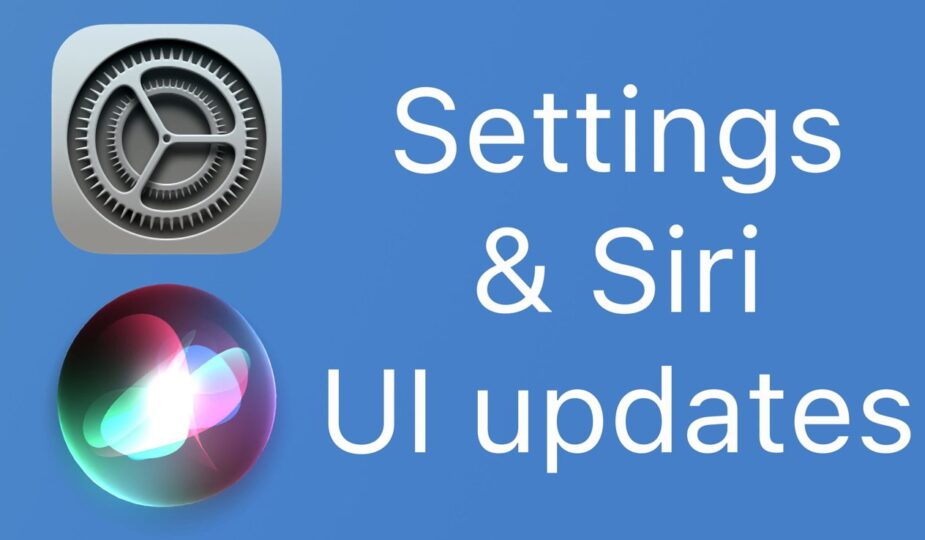macOS 15 brings a new Siri icon and changes the layout for System Preferences
 11 Facebook x.com Reddit
11 Facebook x.com Reddit
Apple is set to overhaul the app menus and user interface in macOS 15, with System Settings getting its biggest reorganization since the app redesign.
For future operating systems, Apple has decided to make changes to the built-in System Preferences application. Individual app settings will be reorganized based on priority and overall importance, people familiar with the matter told AppleInsider.
For example, the section dedicated to notifications and sound settings will be moved lower in the list. The move comes with a variety of music and audio enhancements, including smart song transitions and a new “Passthrough” feature for certain audio hardware.
The section containing general settings will now be located directly below the main network settings. General Settings contains perhaps the most important user-configurable settings in any Apple operating system, so it makes sense to place this section higher on the list.
Wallpaper and display-related settings will no longer be part of a separate section, but will instead be combined with other options. This means that display-related settings will now be located next to general settings, accessibility settings, etc.
Apple will almost certainly introduce different wallpapers to emphasize the visual identity of macOS 15. It doesn't seem like that any new wallpaper-related options will appear in the next iteration of macOS.
The layout of System Preferences will be changed in macOS 15.
Privacy and security settings will be moved to a smarter location next to Related Settings rather than its current position next to General Settings. It will now be located next to Lock Screen, Touch ID, Users, and Groups settings in a clear pattern as Apple looks to bring related settings closer together.
New icon in the Siri menu bar
Settings panel for Siri and Spotlight will also be moved to a section containing settings related to Internet accounts and Game Center. This is likely due to Siri's ability to use the Internet to collect relevant search results and information.
Siri will get a new monochrome menu bar icon in macOS 15
Siri is also expected to get a new monochrome menu bar icon that will allow it to blend better with existing icons. Currently in macOS Sonoma, the Siri icon in the menu bar is multi-colored so it stands out.
In macOS 15, the monochrome Siri icon will match the color of the surrounding icons in the menu bar. It will be able to change to black or white depending on the background, just like any other icon in the macOS menu bar.
It would make sense for Apple to make design changes related to Siri, given the amount of work the company has put into improving its virtual assistant. The new and improved Siri will be able to analyze and summarize text or articles, answer complex questions and transcribe voice notes, as revealed in our exclusive report on Apple Ajax LLM.
Moving from Apple ID to account Apple
The System Preferences app, like almost all other built-in apps, will reflect Apple's decision to rename its iconic Apple ID to an Apple Account, as previously reported.
In macOS 15, the Apple ID will be renamed to an Apple account
There are also signs that the company is testing new account-related settings and features. We could see new animations or redesigned UI elements affecting two-factor authentication settings or the login process itself.
Apple's account rebranding could lead to more changes as Apple develops a new feature called Printable Account Recovery Summary, or PARS for short. While we weren't given any specific details, this feature will likely provide users with the most important information related to their accounts.
Internally, Apple also created a new iCloud preferences panel, separate from the Apple ID (soon to become Apple account) settings. Apple iCloud settings will be located in the same section as your online account settings, Apple Pay, and password settings.
The company is also testing a new “modern” AirDrop user interface that will contain the same basic settings and interface elements, just laid out slightly differently. Users will still be able to decide how they appear in AirDrop, who they want to share files with, and so on.
Individual system applications will also receive design changes, which in some cases will allow the use of new OS features.
System-wide user interface changes
In addition to the “System” application Settings” and Siri, macOS 15 will include visual changes to several core apps, including Calculator, Notes, Safari and Voice Memos – all of which were exclusively revealed by AppleInsider.
Many UI elements also move to Safari
The Calculator app will get an updated iOS-style design with rounded buttons, improvements to the unit conversion system, and an all-new math notes feature. Math Notes is expected to provide support for proper math notation, allowing Apple to compete with products like Microsoft OneNote, PCalc or Soulver 3.
Safari will feature a completely new user interface element in the form of a single menu for controls pages, accessible from the URL bar. This menu will allow users to toggle new features such as Web Eraser and Smart View, as well as merge existing settings and options.
The Apple Notes app is expected to receive new features that will allow you to record audio within the app, transcribe audio, and summarize audio transcripts using artificial intelligence. Voice notes will receive a similar addition, allowing the use of a new type of audio transcription.
How often does Apple change the design of its operating systems?
Every major OS update comes with new features and associated user interface elements. For example, in iOS 14 and later versions of macOS Sonoma, Apple introduced widgets that can be placed on the home screen or desktop, making it easy to identify their latest operating systems.
Desktop widgets are a feature introduced in macOS Sonoma
Major design changes occur from time to time, but their purposes may vary. The most significant visual changes to Apple's operating systems occurred more than a decade ago, when the company released iOS 7 and macOS 10.10 Yosemite, introducing a flat interface across multiple platforms.
While the move from a skeuomorphic look to a flat design language was merely a stylistic choice, other UI modifications are designed with more practical benefits in mind. Apple often tries to make its operating systems more similar to each other.
For example, in macOS Ventura, Apple redesigned the System Preferences app to resemble the Settings app on iOS and iPadOS. The introduction of features like Stage Manager into macOS and iPadOS indicates that Apple's goal is to create a unified user experience.
Planned changes to Safari and Calculator indicate the company's goal is to standardize a common user experience across all of its platforms. Introducing an iPad-style navigation menu for Safari 18 and an iOS-style calculator for Mac will ultimately provide added convenience and a consistent look across devices.
Apple will redesign the Calculator app for macOS to mimic the design of iOS.
Neither iOS 18 nor macOS 15 is expected to have any or revolutionary changes in design. Instead, they will retain the same look and feel as their predecessors, but with minor visual changes that will make the new releases recognizable and more user-friendly.
Apple's decision to change key system settings in macOS 15 (and likely iOS 18) was obviously made with the end user in mind. By combining related options, the company aims to make it easier for users to find specific settings.
However, it is important to remember that not all features make it to release. Apple has been known to delay features in subsequent OS releases, rename them, or cancel them outright. AppleInsider reported that the updated system settings layout can be easily disabled in preview versions of Apple's operating systems, meaning there's no guarantee we'll see the feature.
Apple will unveil its next generation of operating systems at its annual WWDC on June 10, when the previously described design changes are expected to debut, as well as new features and improvements.
Follow AppleInsider on Google News.









